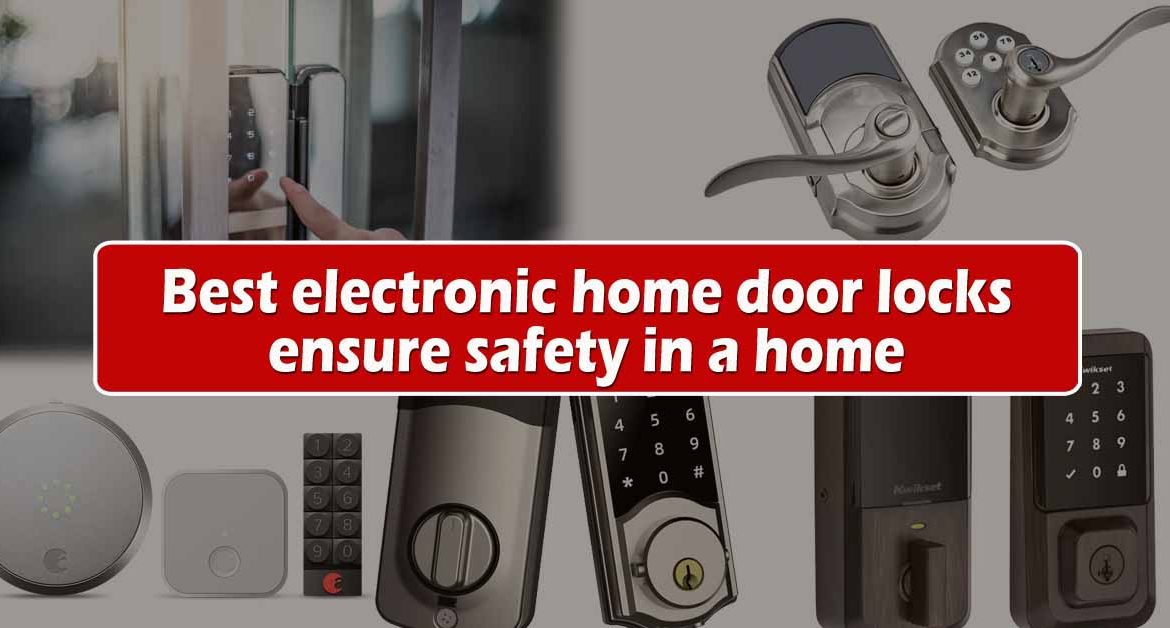Technology makes secure, keyless electronic access to your home easy and accessible. Use this guide to decide the best electronic door lock to get entry quickly and safely.
An electronic door lock will let you gain entrance to your home with a knock code or finger swipe—no more searching for keys. Many of these gadgets work effortlessly with your smart home, getting them even more flexible. Yet when choosing an electronic door lock, doing research is key.
Use this guide to learn what characteristics and functions to look for and where the following choices are considered among the best electronic door lock possibilities available.
Types of Electronic Door Locks
All electronic door locks carry home a modern style to security and ease, but they do so in various ways. Here’s how the different options work out.
Bluetooth Electronic Locks
Many residential door padlocks use Bluetooth to activate and deactivate the bolting mechanisms. By installing an app on your phone and coding it with the door lock, Bluetooth locks can detect your phone’s Bluetooth sign and unlock it as you consider the door. To avoid securing yourself out if the batteries fail, these locks often consist of keypads and old-fashioned keylocks as well.
Biometric Locks
Becoming more prevalent in residential settings recently, biometric locks use your fingerprint to identify your ID and allow access. You can program them to receive some people’s fingerprints, but if you’re not on that register, you won’t be proficient to unlock the door. You’ll regularly find these with a computer keyboard and keylocks as a backup.
Wi-Fi Locks
Many of the best electronic access control systems can work with your home’s Wi-Fi system. Just Downloading a mobile app allows you to connect with your lock through the Wi-Fi, even if you’re around the globe.
They’re trendy with folks who want to control access remotely to permit entrance to cleaners, fix technicians, or friends when they come to pass home.
Magnetic Locks
Magnetic locks, easily called maglocks, lock doors with magnetic appeal. They have a two-part plan, with an electronically operated magnet installed in the door jamb and a metal plate fitted on the door. When the magnet gets electrical current from the control board (via a keypad, card, or push button), it triggers and pulls the metal plate, locking the door.
Maglocks can strap into the blaze alarm system and switch off in the event of an alarm, permitting free passage in the result of an evacuation. Though prevalent in commercial shops, maglocks are rare in domestic locations, as they involve additional hardware and complicated installing.
Electric Bolt Locks
Electric bolt locks can be noticed in both residential and commercial sites, though they’ll likely be completely different results. Both types usually install in the door and send out a bolt into the side when in the lock up position.
Commercial bolt locks usually use a type of electromagnet, known as a solenoid, to control the bolt, while residential locks have motors and devices. A signal sent to the motor or solenoid will recant the bolt, letting route.
Electronic Keypad Locks
Electronic keypads are the most common type of electronic door look for residential entrances (keypads in commercial settings are every so often mechanical). These locks install in the door with a computer keyboard confronting the exterior.
When you punch the correct code, a motor inside the lock will flip the locking bolt, allowing you to use the handle to enter. Locking the door from the outside usually requires pressing one button rather than joining the code.
The following electronic door locks were chosen according to the standards detailed above. All are thought among the best available, so whether you want an easy keypad to replace your existing deadbolt or a high-tech device you can manage from anywhere, one of these brands may meet your requirements.

